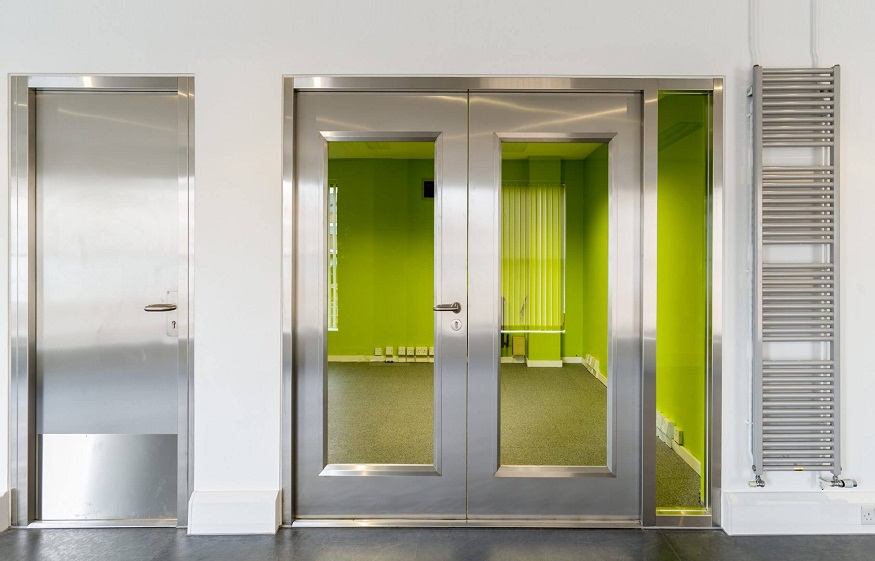Regarding rental property safety, fire doors are often overlooked or misunderstood—especially by landlords and letting agents juggle a wide range of responsibilities. Yet these doors can be the difference between life and death in a fire, providing critical time for residents to evacuate and helping contain flames and smoke.
In the UK, landlords and managing agents are legally obligated to ensure that fire doors are present, compliant, and maintained correctly in certain types of rented properties—particularly in Houses in Multiple Occupation (HMOs), blocks of flats, and buildings with communal areas. Ignoring these responsibilities doesn’t just put lives at risk; it can lead to enforcement notices, prosecution, invalidated insurance policies, and substantial financial penalties.
This guide will explore exactly what’s expected of landlords and letting agents regarding fire doors, clarify the relevant legislation, and outline how to stay compliant. With help from professional providers like Capital Fire Doors, landlords can confidently meet their legal duties and protect their tenants effectively.
Why Fire Doors Matter in Rental Properties
In multi-occupancy properties, fire doors are often fitted to:
- Flat entrance doors
- Communal corridors and stairwells
- Kitchens (especially in HMOs)
- Plant and storage cupboards
- Internal doors in large dwellings or converted buildings
Their presence is critical for protecting escape routes and limiting the potential fire spread throughout the building.
Legal Duties Under UK Fire Safety Legislation
Several pieces of legislation govern the responsibilities of landlords and letting agents concerning fire doors.
1. Regulatory Reform (Fire Safety) Order 2005
This key piece of legislation applies to non-domestic areas of residential buildings—such as the communal parts of blocks of flats and HMOs.
- Carry out a fire risk assessment
- Take general fire precautions to ensure the safety of occupants
- Maintain fire safety systems, including fire doors
A failure to comply with these duties can result in enforcement action by the local fire and rescue authority.
2. Fire Safety Act 2021
This legislation clarified that the Fire Safety Order applies to flat entrance doors and other “structure and external walls” elements in multi-occupancy residential buildings. It emphasised ensuring that flat entrance doors are fire-rated and maintained correctly.
3. Fire Safety (England) Regulations 2022
In force since January 2023, these regulations introduced new requirements for responsible persons in multi-occupancy residential buildings, including:
- Quarterly checks of communal fire doors
- Annual checks of flat entrance doors
- Precise record-keeping and communication with residents about fire door safety
These requirements apply to all buildings in England over 11 metres in height but are considered best practice even in smaller buildings.
Fire Door Responsibilities for Landlords and Letting Agents
Whether you manage one HMO or multiple blocks of flats, you’ll likely fall into one of the categories defined as a “responsible person.” Your fire door responsibilities include:
1. Ensuring Fire Doors Are Installed Where Required
You must ensure that fire doors are installed:
- On flat entrance doors in multi-storey buildings
- Between habitable rooms and escape routes in HMOs
- In key risk areas like kitchens in large or shared homes
- In any communal areas that could become part of an evacuation route
Fire doors must be appropriately certified, with a visible label or plug identifying their fire resistance rating and manufacturer.
2. Regular Fire Door Inspections
Under the Fire Safety (England) Regulations 2022:
- Communal fire doors must be checked every three months
- Flat entrance doors must be checked once a year
These checks should cover the following:
- Gaps around the door and frame (should be 3–4mm on sides and top, no more than 8mm underneath)
- Self-closing devices working properly
- Door closing and latching fully
- Intumescent and smoke seals are present and intact
- The door leaf, frame, and hinges are in good condition
Landlords who lack the time or technical expertise to do this accurately can rely on a professional fire door inspection service to ensure all checks are thorough, compliant, and documented.
3. Maintaining and Repairing Fire Doors
Spotting a problem is only the first step. If fire doors are found to be damaged or non-compliant, you are responsible for repairing or replacing them as soon as reasonably practicable. This might include:
- Replacing seals
- Adjusting or replacing door closers
- Rehanging warped or misaligned doors
- Replacing fire doors that are no longer serviceable
Partnering with a provider like Capital Fire Doors ensures that qualified professionals carry out maintenance work using certified components.
4. Record-Keeping and Communication
The regulations also require landlords and agents to:
- Keep a record of fire door checks and maintenance actions
- Share relevant fire safety information with residents
- Respond promptly to resident-reported issues with fire doors
Clear documentation will not only support your legal compliance but also protect you in the event of an inspection or incident.
Common Mistakes Landlords Make—and How to Avoid Them
Many landlords and agents fail to meet their responsibilities due to confusion or outdated practices. Some of the most common pitfalls include:
- Assuming internal flat doors are compliant just because they “look solid”—without checking certification
- Neglecting quarterly communal checks, especially in smaller buildings
- Failing to replace missing seals or broken closers, thinking it’s a minor issue
- Not educating tenants leads to fire doors being propped open or misused.
- Overlooking converted properties, where internal layouts may have changed but fire door requirements haven’t been updated.
To avoid these mistakes, arrange a complete fire door survey by a professional. Capital Fire Doors provides full support—from initial inspection to repair, replacement, and long-term maintenance.
What Tenants Should Know—and What You Should Tell Them
Educating tenants on fire door safety is a shared responsibility. Make sure they understand:
- Not to prop fire doors open
- To report any doors that don’t close properly
- Not to tamper with seals, closers, or locks
- That fire doors are there to protect their lives—not just a regulatory box to tick
Some landlords choose to include fire door information in their welcome packs, tenancy agreements, or via communal signage.
How Capital Fire Doors Help Landlords Stay Compliant
Managing fire doors across a portfolio of properties can feel overwhelming. That’s why Capital Fire Doors offers a full suite of services designed specifically for landlords, agents, and block managers.
Their services include:
- Certified fire door inspections with complete reporting
- Ongoing maintenance and repairs, including emergency call-outs
- Supply and installation of fully compliant fire doors
- Bespoke solutions for heritage buildings or complex layouts
- Long-term compliance partnerships, ideal for agents managing multiple sites
With a nationwide presence and years of experience, Capital Fire Doors offers peace of mind that your properties meet all regulatory standards and that your tenants are protected.
Conclusion
Fire doors are not just another compliance task—they’re a life-saving measure and a legal obligation. For landlords and letting agents, taking fire door responsibilities seriously is critical to protecting residents, meeting legal requirements, and reducing liability.
Landlords must adopt a proactive and well-documented approach to fire door management, from ensuring correct installation to carrying out regular checks and educating tenants. Thankfully, expert support is available.
For compliant, reliable, and fully managed fire door services, contact Capital Fire Doors. Whether you manage a single HMO or multiple properties, they can help you meet your fire door responsibilities professionally and carefully.

